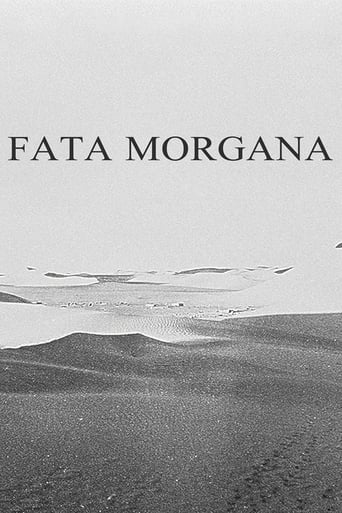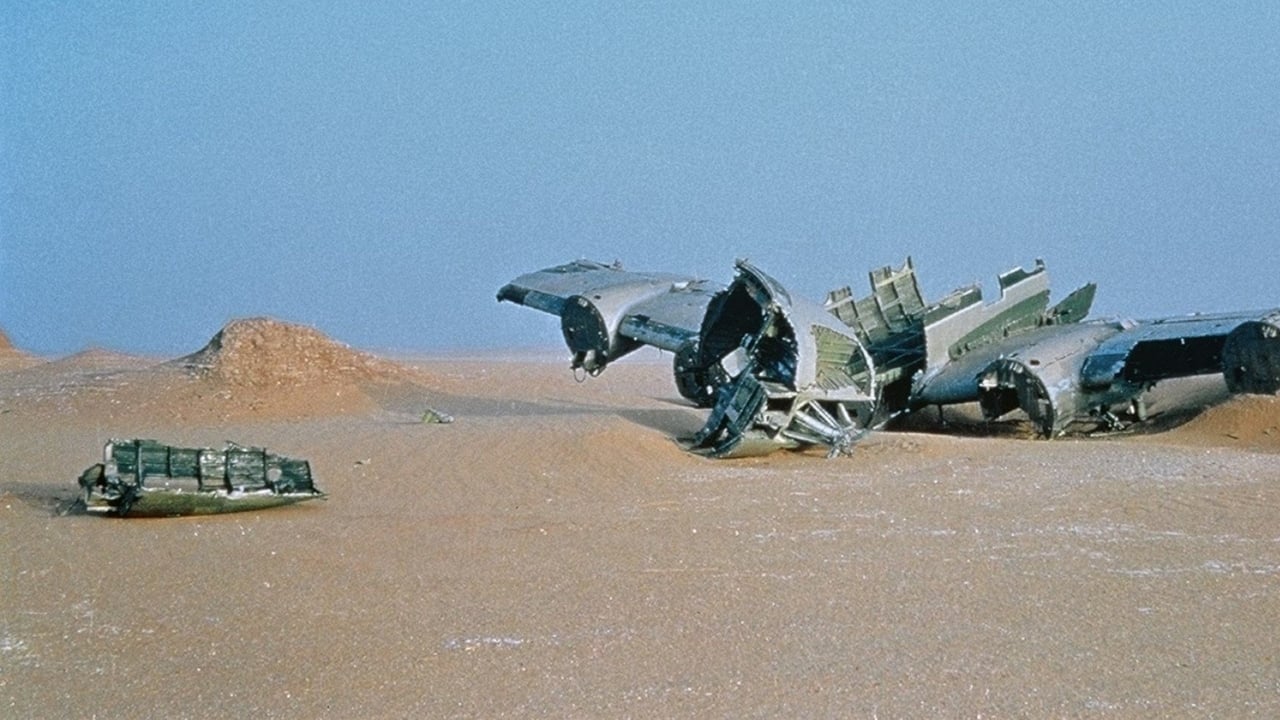tom jones
it's now some 40 years later. Herzog shows what he 'sees', and it's much more than what he was intending. Was global warming his agenda in 1971? Here is it's effects laid out dry and stenching. The polluting exodus from pollution, the advancing desolation, endless fences to the end, defining mine and not yours. To sum: people being themselves. It's not about natural beauty vs. man-made ugliness, or western civilization vs. the barbarians, it's about a very possible future world in which mankind adapts to a lizard's life. That is, if Life goes on. Myths die as storytellers die, while the world spins round. Nothing is ridiculous or wasted now that every drop counts. Diversity is strength and Music is the spoonful of sugar to help the medicine go down. Undomesticated animals' lives are precarious and furtive. The domesticated serve but are sacrificed first but for all comes their time when the dunes sweep in and the sweet water seeps out. 16 years to learn that monitor's secrets. Time's up. And what do those people know that we've never taken the time to learn? How can anyone in the me-first world, this future's mirage, see this and not be shaken.
chaos-rampant
I find Herzog's documentary work to be very uneven. Fata Morgana, a companion piece of sorts to Lessons of Darkness, lacks not only the harrowing spectacle but mostly the discerning eye of an author. It is by comparison amateur looking, aimless pans left and right across the desert the kind of which you would expect from any German tourist equipped with a handycam, the camera left running from the window of a car picking up all kinds of meaningless images, wire fences, derelict buildings and patches of dirt going through the lens in haphazard order, intercut with shots of sand dunes. At one point Herzog encounters a group of starved cattle rotting away in the sand, yet the image is presented much like you and me would, perhaps worse, the camera peering hand-held from one cattle to the next. For a documentary that attempts to be a visual feast, a hypnotic, surreal excursion in uncharted landscapes, it lacks the visual orchestration and conviction of a disciplined author. It's all over the place, half-hearted and tedious, Mayan creation myths recited in voice-over, then some other text Herzog fancied for literature. It's not until near the end that Fata Morgana jumps alive through a series of bizarre encounters. First with a man and a woman playing music in a room, the man singing in a distorted voice through a mic, both of them apathetic in their task. A man holding up a turtle. A group of old people trying to get out of some holes in the ground. Other than that, this one seems to have very little of substance to offer or visual splendor to offer.
Cosmoeticadotcom
Fata Morgana, the 1971 documentary-like film by German filmmaker extraordinaire Werner Herzog, filmed over several years in the late 1960s, is one of those rare DVDs that should be listened to with the commentary turned on. It is a visual feast of North African (mostly Saharan) imagery that is timeless. You simply could not tell that it was made over thirty-five years ago. The soundtrack to the film, including German classical music (Mozart and Handel), and rock music by Blind Faith and Leonard Cohen, also lends its timeless quality. The narration by three different German narrators (German film historian Lotte Eisner, Eugen Des Montagnes, and Wolfgang von Ungern-Sternberg) is solid, and Herzog goes on and on of Eisner's import to this project, himself, and film history, but the English speaker of the translation, James William Gledhill, has a voice that seems downright deific, which lends itself far more perfectly to this project, even though much of the text- in either language, is rather superfluous. Yes, the faux Biblical sounds of the Popul Vuh Mayan creation myth in the film's first part, Creation, is interesting, but the text Herzog wrote for the remaining two parts (Paradise and The Golden Age), along with quotes from a German poet Herzog names as Manfred Eigendorf, almost seems a satire of the first part's somber tone
. The film, it seems was pieced together during the shooting of several other Herzog projects concurrently- the fictive Even Dwarfs Started Small, and the documentaries The Land Of Silence And Darkness and The Flying Doctors Of East Africa, but these projects' rejected material only add to the beauty of this film, such as aerial scenes of a flamingo mating lake from afar that give one an eerie unearthly sense, one which Herzog crows about in his commentary. This unearthly feel is present right from the film's start of several airplanes landing on a desert runway, with their images getting successively blurrier as the heat from the ground rises, and increases the distorting waves that mar the images. That this film was influential in the Quatsi films of Godfrey Reggio is an understatement. But, whereas Reggio is content to just toss images at you, Herzog has an ability that only American filmmaker Terrence Malick also has: to make a wholly self-contained vocabulary out of the juxtaposition of images and words, and one dependent upon an emotion-first thrust. Analysis can fail when brought to such endeavors. Herzog often does not understand even why his art is great. The best he does often is wholly unconscious and mesmeric. This is why his contempt for the Lowest Common Denominator pap of Hollywood is openly stated on the commentary.Perhaps the best illustration of this comes in a scene that, on the commentary, Herzog tells us followed a severe drought in Cameroon. It shows the jerkied carcasses of cattle, and Herzog describes the unbearable stench. Yet, the viewer can sense this all from the images, the blackness of the sun dried portions of animals, and the blanched bones. Yet, even in that commentary, Herzog focuses on the stench, not any deeper meaning. He is content to let you imbue and interpret what you will into and of his work, such as the almost erotically feminized shapes of sand dunes, which recalls a scene from Ingmar Bergman's Hour Of The Wolf, where Max Von Sydow, runs his hand over Ingrid Thulin's beautiful nude body's curves. But, the archetypal image in this film, which symbolizes much of Herzog's career, is of a mirage of a faraway car driving back and forth on the surface of what appears to be a lake. It is deep, hypnotic, illusive, elusive, supernatural, yet real, just as Herzog, the believer who came from a family of militant atheists, is. But, then, like everything else, it ends.
terry nienhuis
You will be able to tell within the first 30 seconds of this film whether you want to finish watching it. The film opens with images of planes landing at an airport, one plane after another diving into a mirage-filled runway. You will be able to accurately guess that this movie is not about a "story." At first viewing, it's even easy to think the opening images are repetitive shots of the same plane. The initial drama is in the acuteness of your perception, which is built on your willingness to experience the film simply as a series of images. If after this opening, you want to see the movie, you will not be bored. You may even be mesmerized. The movie may be an emotional experience; it may be an intellectual experience; it may be both. Judging from the DVD commentary, which is essential, it was primarily an emotional experience for Herzog, and, at one point, he talks explicitly about how the film is a collaboration between filmmaker and viewer. There's plenty of room for the viewer to make of this film exactly what he or she wants to make of it. Take a gamble?


 AD
AD



